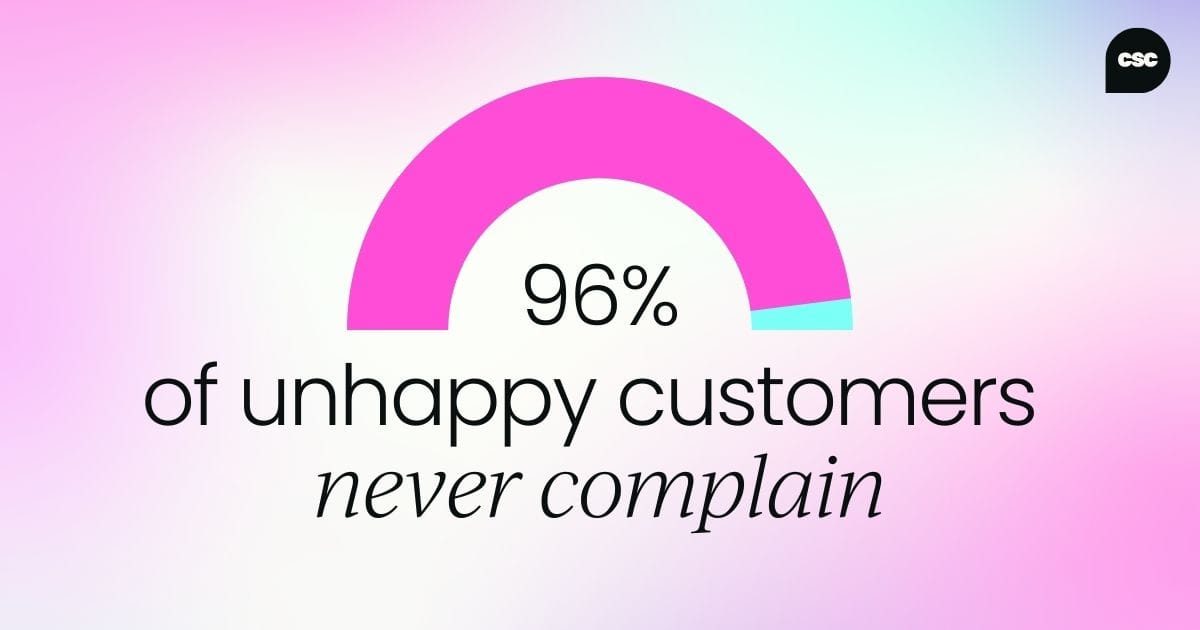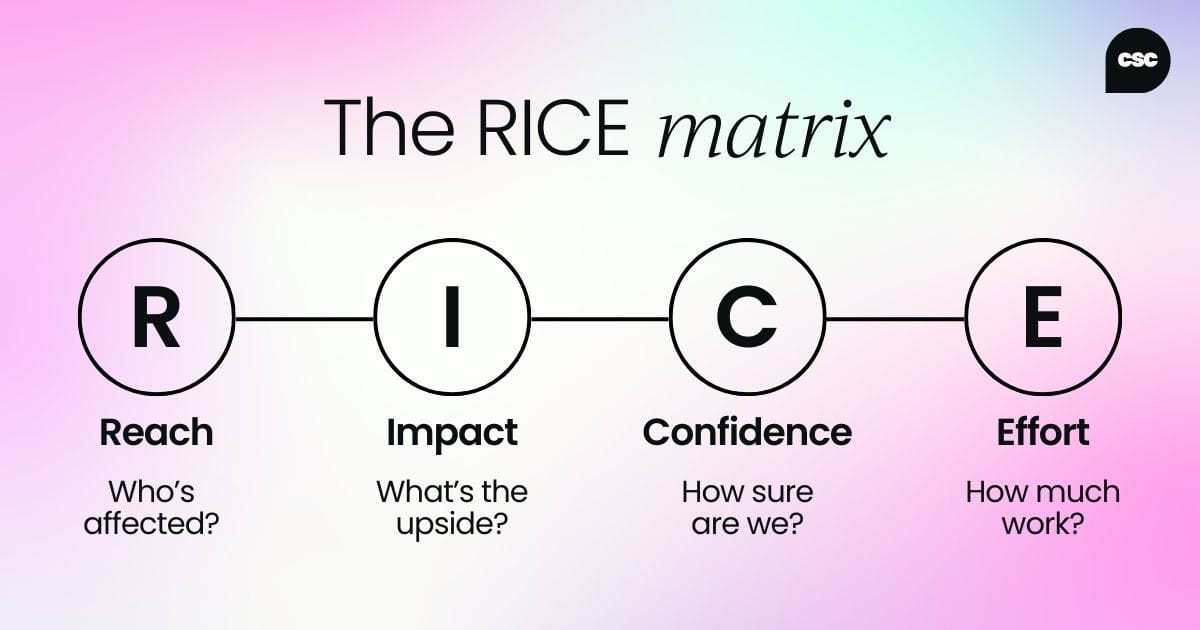Every business encounters customer complaints: they’re an inevitable part of any operation. However, the way these complaints are managed can significantly affect the success of an organization.
Surprisingly, it’s been found that around 96% of unhappy customers don’t voice their complaints. This staggering statistic highlights the need for businesses to proactively seek out and address customer grievances.
I’ve formed this guide based on my experience to explain why customer complaints aren’t a total disaster, but are invaluable nuggets of feedback to business growth and innovation.
We’ll uncover the hidden value behind customer complaints and offer actionable insights into transforming them into product gold.

The hidden value of customer complaints
During my tenure as a Practice Leader at a prominent regional systems integrator and cloud provider, I faced a pivotal moment that significantly influenced my approach to enterprise digital transformation.
One of our major service customers encountered numerous challenges with hybrid cloud and services adoption, experiencing resistance from their internal teams and exhibiting signs of potential churn.
Rather than treating this as a typical escalation, I identified an opportunity to revamp our engagement model. I initiated a strategy termed "transformation through transparency" – establishing weekly executive roundtables that included C-suite stakeholders, technical teams, and our cloud architects to openly discuss challenges and collaboratively develop solutions.
What began as a crisis management initiative evolved into a transformative methodology that I have since applied across various key accounts. By fostering a collaborative environment to address customer concerns, we not only mitigated the client's hesitation but attained a notable 36% year-over-year growth in utilization and professional services.
This experience underscored that true customer success extends beyond technical solutions – it involves cultivating trust through authentic leadership and strategic partnership.
This approach laid the foundation for a formalized joint customer operating model, enabling other leaders to transition their customer relationships from transactional to genuinely transformational. It exemplifies how challenges, when approached with innovation and empathy, can serve as catalysts for industry-leading practices.
Understanding the 96% rule
Although most unhappy customers stay silent, their unvoiced complaints can have a significant impact on a business. Each complaint stands for many others who faced similar issues but chose not to speak up. The magic of recognizing this is clear: businesses can understand the actual cost of these unvoiced complaints and the importance of addressing them.

The business case for complaint analysis
Not all negative feedback is a dead end; in fact, it can be a goldmine of insights. You’ll find that analyzing customer complaints offers a high return on investment (ROI) compared to traditional market research methods.
For instance, when Starbucks implemented its "My Starbucks Idea" platform, they received over 150,000 ideas from customers, which resulted in several successful product innovations. By implementing effective customer feedback programs, businesses can uncover valuable insights that drive long-term value creation.
Complaints, when analyzed correctly, can reveal patterns and trends that inform product development, leading to improved customer satisfaction and business success.
Building a gold mining system for complaints
Systematic collection methods
To transform complaints into valuable insights, businesses must adopt systematic collection methods.
This involves gathering feedback through multiple channels, such as customer surveys, social media, and direct interactions. Integrating these various data sources enables a comprehensive understanding of customer grievances. Utilizing technology and tools such as Zendesk, SurveyMonkey, and Hootsuite can streamline this process and ensure that no valuable information is missing.
Analysis framework
Once collected, feedback must be analyzed using a robust framework. The RICE Matrix, which stands for Reach, Impact, Confidence, and Effort, is a valuable tool for prioritizing complaints based on their potential impact.
Practical example:
- Reach: A software bug affects 20% of users.
- Impact: If fixed, it could improve user satisfaction by 15%.
- Confidence: The development team is 90% confident in their solution.
- Effort: It would take approximately 30 hours to resolve.
This matrix allows you to prioritize complaints that’ll have the most significant positive impact.

Additionally, a priority scoring system can help show which issues require immediate attention. In recognizing patterns and trends within the feedback, you can make informed decisions on how to address and resolve customer complaints effectively.
Transforming insights into action
Cross-functional collaboration
Effective resolution of customer complaints requires cross-functional collaboration. Setting up Insight Councils, making up representatives from various departments, ensures that feedback is addressed holistically. Clear role definitions and responsibilities, along with established communication protocols, are essential for seamless collaboration and the successful implementation of solutions.
Implementation process
An organized implementation process is crucial for turning insights into action. Utilizing a prioritization framework helps distribute resources effectively, while timeline management ensures that solutions are delivered promptly. By following a structured approach, businesses can address customer complaints efficiently and create a positive impact on their products and services.

Measuring success and ROI
KPIs
Measuring the success of a complaint resolution system involves tracking key performance indicators (KPIs). Customer satisfaction metrics, support ticket reduction, product adoption rates, and revenue impact are all valuable indicators of the system's effectiveness.
For example, after implementing a structured complaint resolution system, Amazon reported a 65% reduction in customer support tickets and a 20% increase in customer satisfaction. Regularly watching these KPIs allows businesses to assess the impact of their complaint resolution efforts and make necessary adjustments.
Long-term benefits
A successful complaint resolution system offers many long-term benefits. Improvements in customer retention and brand loyalty, along with a competitive advantage, are some of the positive outcomes. By consistently addressing customer complaints and turning them into opportunities for innovation, businesses can build stronger relationships with their customers and ensure sustained growth.

Creating a feedback-driven culture
Employee empowerment
Empowering employees to actively take part in the feedback process is vital for creating a feedback-driven culture. Training programs, recognition systems, and performance metrics that align with feedback goals encourage employees to take ownership of customer complaints. When employees are motivated to contribute to feedback collection and resolution, the entire organization benefits.
Organizational change management
Implementing a feedback-driven culture requires effective organizational change management. Leadership buy-in is crucial for driving this cultural shift. Clear communication of the change, along with strategies for managing resistance, ensures a smooth transition.
By fostering a culture that values and acts upon customer feedback, businesses can create a more responsive and innovative environment.

Getting started: 30-day quick wins
The first steps in implementing a feedback-driven system should focus on quick wins. Setting up the necessary infrastructure, such as feedback collection tools and communication channels, is essential. Early victories, such as resolving a few key complaints, help build momentum and show the value of the system to stakeholders.
Long-term strategy
A comprehensive long-term strategy is necessary for sustained success. Defining 90-day goals, 6-month objectives, and a 1-year vision provides a clear roadmap for continuous improvement. Regularly reviewing and adjusting this strategy ensures that the feedback-driven system stays aligned with business goals and customer needs.
Common pitfalls to avoid
While creating a complaint resolution system, businesses must be aware of common pitfalls. One major pitfall is not closing the feedback loop, which leaves customers feeling unheard.
Another is overcomplicating the feedback collection process, making it difficult for customers to provide their input. Additionally, not acting on feedback promptly can lead to customer frustration and loss of trust. By recognizing and avoiding these pitfalls, businesses can ensure the effectiveness of their complaint resolution system.
Practical tools and templates
Templates for feedback collection
Providing structured templates for feedback collection helps standardize the process and ensures that all necessary information is captured.
Customer feedback form:
- Name
- Product/service
- Details of complaint
- Suggested solution
Employee feedback collection template:
- Department
- Feedback received
- Action taken
- Outcome

Checklists for implementation
Checklists can help ensure that all necessary steps are taken during the implementation process.
Implementation checklist:
- Find feedback collection channels
- Set up feedback collection tools
- Train employees in feedback collection and analysis
- Establish Insight Councils
- Implement prioritization framework
- Monitor and measure KPIs
- Regularly review and adjust strategy
Conclusion
Transforming customer complaints into product gold is a strategic approach that can drive innovation and business success. When we recognize the hidden value of complaints, of systematically collecting and analyzing feedback, and implementing actionable insights, businesses can create a positive impact on their products and services.
Over the course of my 20-year career, I’ve embracing a feedback-driven culture because it empowers employees and fosters long-term growth. As leaders, it’s our responsibility to listen to our customers and turn their complaints into opportunities for improvement.
The future of our businesses depends on our ability to adapt and innovate based on the feedback we receive. Looking forward, businesses should continually invest in improving their feedback systems and stay updated with emerging tools and technologies to keep a competitive edge.



 Follow us on LinkedIn
Follow us on LinkedIn





